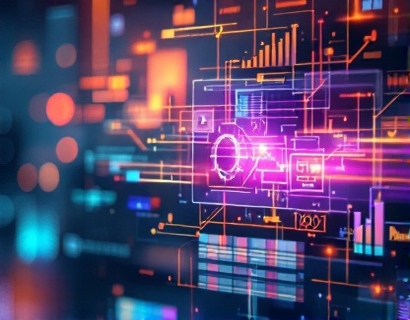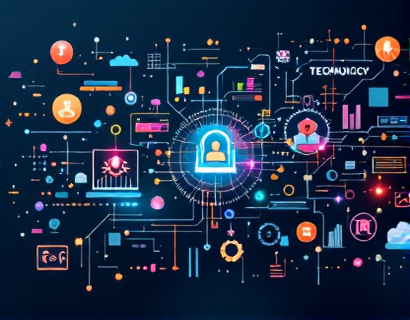Ucosystem Digital Asset Verification: Access Premium Features with Decentralized Trust
The world of digital assets has evolved significantly over the past few years, offering a myriad of opportunities for investors, enthusiasts, and users alike. Within this ecosystem, the ability to verify digital asset holdings efficiently and securely is paramount. This is where the concept of decentralized verification comes into play, providing a robust solution for managing and accessing premium features within digital asset platforms. This article delves into the intricacies of decentralized digital asset verification, highlighting how it empowers users to unlock exclusive benefits and ensure secure management of their assets within the Ucosystem.
Understanding Digital Asset Verification
Digital asset verification is the process of confirming the authenticity and ownership of digital assets such as cryptocurrencies, tokens, and other blockchain-based assets. In traditional systems, this process often relies on centralized authorities or intermediaries, which can introduce points of failure and potential security risks. Decentralized verification, on the other hand, leverages blockchain technology to create a trustless environment where verification is performed by the network itself, eliminating the need for central points of control.
The core principle behind decentralized verification is the use of smart contracts and distributed ledgers. Smart contracts are self-executing contracts with the terms of the agreement directly written into code. These contracts automatically verify and enforce the rules set for asset ownership and transfer, ensuring transparency and immutability. By utilizing a blockchain-based ledger, every transaction and verification step is recorded in a tamper-proof manner, providing a clear and verifiable history of asset ownership.
Benefits of Decentralized Digital Asset Verification
The adoption of decentralized verification methods offers numerous advantages over traditional centralized approaches. One of the most significant benefits is enhanced security. By distributing the verification process across a network of nodes, the risk of a single point of failure is minimized. This makes it extremely difficult for malicious actors to manipulate or alter verification data, thereby safeguarding user assets.
Another key advantage is increased efficiency. Decentralized verification eliminates the need for intermediaries, reducing transaction times and costs. Users can verify their asset holdings and gain access to premium features almost instantaneously, without the delays associated with traditional verification methods. This efficiency is particularly crucial in a fast-paced market where timely access to assets can be a competitive advantage.
Decentralized verification also promotes greater transparency and trust within the ecosystem. All verification processes are recorded on a public ledger, allowing users to independently verify the authenticity of asset holdings. This level of transparency builds trust among users and enhances the overall integrity of the platform.
Decentralized Applications (dApps) in Digital Asset Management
Decentralized applications, or dApps, are software applications that run on a blockchain or a decentralized network. Unlike traditional web applications that rely on centralized servers, dApps are designed to be resistant to censorship and control by any single entity. In the context of digital asset verification, dApps play a crucial role in providing users with a seamless and secure experience.
A dApp for digital asset verification, such as the one described, leverages the power of blockchain to offer a user-friendly interface for verifying asset holdings. Users can simply input their wallet addresses or asset identifiers, and the dApp will automatically query the blockchain to confirm ownership and authenticity. This process is not only quick but also highly secure, as it relies on the immutable nature of blockchain technology.
One of the most significant advantages of using a dApp for verification is the enhanced user experience. Traditional verification methods often require users to interact with multiple platforms and provide extensive documentation, leading to a cumbersome and time-consuming process. A dApp simplifies this by centralizing the verification process in one accessible location, making it easy for users to manage their assets and access premium features.
Accessing Premium Features through Decentralized Verification
Within the Ucosystem, premium features and exclusive benefits are often reserved for verified users. These features can include advanced trading tools, priority customer support, access to exclusive events, and more. By integrating a decentralized verification system, the Ucosystem ensures that only authenticated users can unlock these premium offerings.
The verification process typically involves a few key steps. First, users connect their digital asset wallets to the dApp. The dApp then initiates a query to the blockchain to retrieve and verify the user's asset holdings. Once verification is complete, the user is granted access to the premium features. This entire process is automated and transparent, ensuring that users can quickly and easily access the benefits they are entitled to.
Moreover, the decentralized nature of the verification process means that there are no centralized databases storing sensitive user information. This reduces the risk of data breaches and enhances user privacy. Users can be confident that their asset information is secure and only accessible through their own verified credentials.
Enhanced Asset Management with Decentralized Verification
Decentralized verification not only facilitates access to premium features but also enhances the overall management of digital assets. By providing a reliable and transparent method for verifying asset ownership, users can better manage their portfolios and make informed decisions.
For instance, the ability to quickly and accurately verify asset holdings allows users to track their investments in real-time. This is particularly useful for traders and investors who need to monitor their positions and react to market changes swiftly. The dApp can also integrate with other blockchain tools and services, providing a comprehensive suite of tools for asset management.
Additionally, decentralized verification can simplify the process of asset transfer and settlement. Smart contracts can automate the transfer of assets upon verification, ensuring that transactions are executed accurately and efficiently. This reduces the potential for human error and speeds up the entire process, making it more user-friendly and cost-effective.
Challenges and Considerations
While decentralized verification offers numerous benefits, there are also challenges and considerations to keep in mind. One of the primary challenges is the need for widespread adoption and standardization. For decentralized verification to be truly effective, it must be adopted by a significant portion of the ecosystem. This requires collaboration among various platforms and services to ensure interoperability and consistency in verification processes.
Another consideration is the user education aspect. Many users may be unfamiliar with blockchain technology and decentralized applications. Providing clear and comprehensive guides, tutorials, and support is essential to help users understand and utilize the verification process effectively.
Scalability is also a critical factor. As the number of users and assets grows, the verification system must be able to handle increased load without compromising performance. This requires robust infrastructure and continuous optimization to ensure that the dApp remains responsive and reliable.
Future Prospects of Decentralized Digital Asset Verification
The future of decentralized digital asset verification looks promising, with ongoing advancements in blockchain technology and increasing user adoption. As more platforms adopt decentralized verification methods, the ecosystem is likely to become more interconnected and user-friendly.
One exciting development is the integration of decentralized identity solutions, which can further enhance the verification process by providing users with a secure and portable identity across different platforms. This can simplify the verification process and reduce the need for repeated authentication.
Additionally, the rise of layer 2 solutions and cross-chain interoperability is set to improve the scalability and efficiency of decentralized verification systems. These technologies enable faster and cheaper transactions, making the verification process even more seamless and accessible.
Conclusion
Decentralized digital asset verification represents a significant leap forward in the management and access of premium features within the Ucosystem. By leveraging blockchain technology, users can enjoy a secure, efficient, and transparent verification process that enhances their overall experience. As the ecosystem continues to evolve, the adoption of decentralized verification methods will likely become the norm, paving the way for a more trustworthy and user-centric digital asset landscape.










































